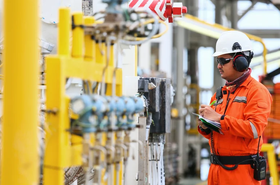Connectivity is the lifeblood of digital transformation for all organizations. Whilst a lot of discussion has focused on the complexity of cloud data centers, application architectures and even edge servers and IoT, it’s the 1.5 million kilometers of subsea cables around the globe that are taking on new importance in the connectivity puzzle. It’s no surprise when you consider that 98 percent of international Internet traffic is now ferried around the world by these cables.
But subsea cables aren’t exactly a new phenomenon. Telecom providers have been laying cables the size of hose pipes under our seas as far back as the 1800s, and traditionally international cables have been funded by consortia of carriers, who largely stay under the radar. However, what is new is that familiar names in Big Tech have started to go it alone, taking on the role of the network provider by constructing their own cables around the world. Last month, Google landed its much anticipated Grace Hopper transatlantic cable connecting the US, the UK and Spain. Facebook also recently announced 2Arica Pearls, the world’s longest subsea cable system that will connect 33 countries across Africa, Europe and Asia with 45,000km of cable. And more investments are on their way as both tech giants continue to build their own network and Internet infrastructure.
These organizations, who are behind around 80 percent of recent transatlantic cable investments, are effectively becoming the telco providers that they’ve displaced. It’s certainly an interesting evolution not only in the hyperscaler race but also in today’s network infrastructure ecosystem.
Ever-increasing connectivity requirements
One of the main drivers behind why tech giants are striving for more control over cloud and Internet infrastructure is connectivity. The past 18 months have highlighted the importance of this magic word as billions of people around the world have relied on the Internet to work, learn, shop and stay connected to family and friends.
Reliance on cloud-based services from consumers all the way to global economies was already apparent well before the pandemic but it has reached new, unimagined heights and will continue to do so with the move to hybrid working. With this comes demand for increased bandwidth on the networks that power these services. And add to the mix new data-intensive technologies such as IoT, VR and artificial intelligence and software providers - who serve billions of consumers and businesses every day - are realising the need to bolster the Internet backbone in order to continue meeting current and future capacity needs, all while staying competitive.
Digital experience is king for enterprises
A further motivation behind increased investment into subsea cables by software providers is naturally the enterprise customers they serve. For these businesses of all sizes operating in the digital world, customer retention and employee productivity is now dependent on a good digital experience. Providing a first-rate digital experience at scale now hinges on the very products and solutions provided by these tech giants so demand for a high-quality, uninterrupted service is at an all time high. This, coupled with growing awareness of cloud and internet provider performance, is creating new demands on business. In turn, comes a need for software providers to have control and visibility over the networks that underpin their enterprise services. There’s evidence of some cloud providers already taking action to ensure this - Google with it’s funding of subsea cables and Microsoft building out its edge services to improve latency and availability on its backbone. By removing potentially weak links in the network chain, these providers can take control of more of the connectivity underpinning user experience.
Expansion and diversification
Lastly, entering new markets and expanding their services is another reason the hyperscaler firms are financing and deploying connectivity infrastructure. By doing so, they can broaden their customer reach and, in turn, revenue streams. Facebook’s 2Africa subsea cable is one example of this, while Microsoft’s has strengthened its involvement in unified communications with Microsoft Teams. Amazon, on the other hand, has built out its retail services network, now offering cloud-based contact centers as well as AWS Direct Connect - a paid service providing enterprises with a dedicated network connection to AWS for quicker and more reliable bandwidth.
It’s a software future
As the need for connectivity continues to grow, it’s likely so will software providers’ investment in their own infrastructure. Much like the telecom providers that came before them, tech companies are building out their own networks because the demand for a good digital experience is there and will continue to be. What sets these providers apart though is their unique cash flow from applications they own and their ability to monetise their services, enabling them to invest in infrastructure quite aggressively. We’re well on our way to seeing these companies as part and parcel of today’s network infrastructure dynamic.





